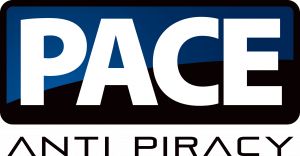John McTiernan is a household name. A man who defined action films. Let’s just name a few…we got Die Hard, Predator, Die Hard With A Vengeance, and yes, Last Action Hero. He has also made some other great films like The Thomas Crown Affair and The Hunt for Red October. He has made some stinkers, such as Medicine Man, The 13th Warrior, and Basic. But what if I told you that there’s a film he directed that was the catalyst to his ending up in federal prison? Sounds crazy, right? But it’s true. Today, we are here to look at Rollerball. It’s a movie whose word of mouth is so bad that you’d think we would have covered it on our Awfully Good Channel. But alas, this will be the first time we dive in. So sit back, relax, and take it all in as we check out What Happened To Rollerball.
To begin, let’s jump back to the late 90s. John Is well on his way to making his new big film, The Thomas Crown Affair. It’s here he strikes up the idea of wanting to remake Rollerball. Now, for those who don’t know, this movie isn’t an original idea. It was originally made in 1975, starring James Cann. The film is set in a dystopian future where global corporations have replaced national governments. It centers on Jonathan E., a superstar player of the violent sport rollerball. The game, designed to demonstrate the futility of individualism, becomes a tool of control. Jonathan’s fame and individual prowess threaten the corporate agenda, leading executives to pressure him to retire. As he resists, the game’s rules are made increasingly lethal, culminating in a final match with no penalties or time limits. Despite these efforts, Jonathan’s defiance and survival in the ultimate game challenge the corporate bigwigs, symbolizing a stand against corporate domination.
For what it’s worth, it’s a pretty good movie. Something that feels right to have made back in the 70’s…but how would that have worked with the 2000’s crowd? Well, if you think about it, X Games and extreme sports were becoming very popular around that time. John had a proven track record where he could make most things he created turn to gold. He would begin working on the script. The first draft was considered great, even surpassing the original film, but John wasn’t a fan of it preaching social commentary. John unleashed his action prowess and thought audiences would want to see more scenes involving Rollerball. After multiple rewrites, he made sure it included weird costumes and stunts and felt like something out of the WWE, as well as give it an underdog-driven story.
When it came time for casting, John wanted to strike a balance between honoring the original film’s spirit but also appeal to contemporary audiences. Jonathan Cross, changed from Jonathan E for some reason, was originally offered to Keanu Reeves. He would turn it down, and the role went to Ozstryker. Sorry, I mean Chris Klein from American Pie. His youthful charm and athleticism were exactly what John envisioned for his main character. Next up was LL Cool J as Marcus Ridley, Jonathan’s friend and mentor in the Rollerball world. Rebecca Romijn was also cast in the film. While her role is pivotal to the plot, she comes off as more of a mere romantic interest. The rest of the cast included Jean Reno, Naveen Andrews, and Stellan Skarsgard.
Film production only lasted 15 weeks, from July to November 2000. Principal photography took place in Montreal, Canada, Wyoming, and San Francisco. and Almaty, Kazakhstan. The choice of locations was influenced by the need to create a futuristic and visually striking backdrop for the film’s dystopian setting. Montreal provided urban landscapes and modern architecture, while Kazakhstan offered unique and exotic scenery that added to the film’s otherworldly atmosphere. Additionally, some interior scenes were filmed on soundstages to create the immersive world of Rollerball’s high-stakes sport.
John McTiernan sought to infuse Rollerball with a frenetic energy and visual dynamism that would captivate audiences. To achieve this, he employed fast-paced editing and dynamic camera work and updated the sport of Rollerball with more extreme stunts and visual effects.

In May 2001, when it was time to screen the film, test audiences responded negatively. The film’s first cut was over two hours long so MGM, the film’s distributor, would move the release date to July 13 of that year. They would give another go with test screenings to hopefully find the right audience for it. After the first test screen disaster, Harry Knowles, an infamous critic from Ain’t It Cool News, was invited by McTiernan to view the film in Long Island. In his review of McTiernan’s original cut, he said that the movie was bad, as well as it being a hard-R film with much nudity and some brutal violence in the sports scenes. He stated, “The ‘Rollerball’ edit I saw was one of the worst films I’d seen in my life. There was jeering in the theater,”. A fun fact about Knowles is that he was one of the people who read the original first draft of the script, which John rejected, and said that it was an amazing script that solved all the problems of the original film.
Following all of the negative test screenings, MGM requested reshoots and re-edits to take place, reducing the film to a PG-13 rating. This was done to get a wider audience to see it. At the time, a new head of marketing was put into place at MGM. He asked John to move the 2001 summer release date in favor of a better film. It allowed for more time to devise a better marketing strategy as well. Instead of August 2001, it would get pushed to February 2002. If you have ever followed Box Office reports from the 2000s as well as through the middle of the 2010s, you will know that January-February film releases were considered “dump months”. That means unless it’s a holdover film that was up for awards or a film to coincide with Valentine’s Day, it would be in for a huge disaster to even make a dent in the box office. Towards the end of 2001, John shot two weeks of new footage, including the film’s ending, and cut down on both violence and nudity. Action scenes were cut down or edited, as well as blood and nudity.
The original score, composed by Brian Transau, was removed because it sounded “too Arabic.” He would be replaced with Luc Besson’s collaborator Eric Serra. Eric would add a new score, while some of the songs originally included in the soundtrack would also be removed or changed for the film. Strangely, the score would be released for purchase, but not the soundtrack, which included songs from P.O.D., Rob Zombie, Slipknot, who make an appearance in the film, Drowning Pool, and Godsmack.

Rollerball was released to theaters on February 8, 2002. It placed third on opening weekend behind newcomers Big Fat Liar and Collateral Damage. It would gross around $9 million that first weekend. On its second weekend, the film disappeared out of the top 10, ranking in 13th place, somehow grossing another $3 million. After seven abysmal weeks in theaters, it would finish its box office run domestically with $18 million. Internationally, it would gross a meager $6 million, with the final worldwide total being $25 million. It was considered a colossal flop with a production budget of $70 million.
Critics and audiences ripped this film to shreds, sitting at 3% on Rotten Tomatoes. The critics’ consensus states: “ Removing the social critique of the original, this updated version of Rollerball is violent, confusing, and choppy. Klein makes for a bland hero. Roger Ebert said it was “an incoherent mess, a jumble of footage in search of a plot, meaning rhythm and sense.”
The film was nominated for several awards, including the Golden Raspberry Award for Worst Supporting Actress. Have no fear, though, because Rebecca Romijn didn’t walk away a winner here…nope. That award went to Madonna for her cameo in Die Another Day. The 2002 Stinkers Bad Movie Awards, an award show that ended in 2006, won several awards, including Worst Director, Worst Remake, and Worst Female Fake Accent. Madonna once again beat out Rebecca Romijn for Worst Actress, this time for Swept Away. Man, 2002 wasn’t kind to Madonna, was it?
Rollerball was released on VHS and DVD in the summer of 2002. Trying to cap what most DVDs at the time were doing, it would be released as the R-rated version. It would come packed with extras, including The Stunts of Rollerball feature, which this writer would say is the best of the bunch, an Interactive Yearbook, which basically highlights reels of the cast, Rob Zombie’s music video “Never Gonna Stop”, as well as a commentary from Rebecca, Chris, and LL Cool J…unfortunately John McTiernan doesn’t add any insight to the making of the film. Having sat down and listened to the commentary, I can tell you It’s also the weakest bonus feature. There’s no new perspective to gain from listening to it, so just avoid it. Unfortunately, DVD sales didn’t improve this film’s overall reception or legacy.

The legacy of this film isn’t just that it is a bad film. As stated before, John McTiernan went to jail for his involvement in a wiretapping scandal. During the production of Rollerball, McTiernan hired private investigator Anthony Pellicano to wiretap Charles Roven, a producer he worked with on the film. McTiernan was attempting to gain leverage in a professional dispute. When the FBI investigated Pellicano’s activities, McTiernan initially denied his involvement. However, evidence eventually surfaced, proving that he had indeed hired Pellicano.
McTiernan was charged with making false statements to the FBI and perjury. In 2006, he pleaded guilty to the charges but later tried to withdraw his plea, claiming his legal counsel had misled him. This attempt was unsuccessful, and in 2010, McTiernan was sentenced to one year in federal prison, three years of supervised probation, and a $100,000 fine. He began serving his prison sentence in April 2013 and was released in February 2014.
So, What Happened to Rollerball? Well, despite high expectations of McTiernan’s successful track record with action films, the 2002 remake was a critical and commercial failure. It suffered from a weak plot, lackluster performances, and excessive reliance on action sequences. It failed to capture the essence of the original film’s social commentary, instead opting for mindless spectacle. Additionally, the production was plagued by issues such as budget overruns, studio interference, and logistical challenges, including a director having a hard time with it. Ultimately, Rollerball serves as a cautionary tale of the pitfalls of Hollywood remakes and the importance of staying true to the spirit of the source material.
Originally published at https://www.joblo.com/what-happened-to-rollerball-2002/






